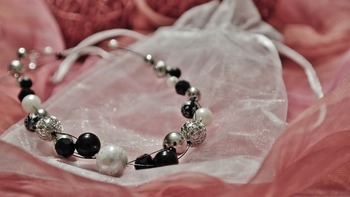
Jewellery design is a fascinating blend of artistry, craftsmanship, and technological innovation. It encompasses everything from conceptual sketches to the final polished piece that adorns the body. The process of designing jewellery is as intricate as the pieces themselves, requiring a deep understanding of aesthetics, materials, and techniques. This article delves into the various aspects of jewellery design, exploring its history, the creative process, modern technologies, and the trends shaping the industry today.
A Glimpse into History
Jewellery design has a rich and diverse history that spans thousands of years. Early jewellery was made from natural materials such as shells, stones, and bones. As human societies evolved, so did their jewellery, incorporating metals like gold, silver, and bronze, along with precious and semi-precious stones.
Ancient civilizations, including the Egyptians, Greeks, and Romans, set the foundation for jewellery design. The Egyptians, known for their elaborate and symbolic jewellery, used gold and gemstones to create pieces that signified status and power. The Greeks introduced intricate designs that celebrated beauty and mythological themes, while the Romans popularized the use of rings and brooches adorned with cameos and intaglios.
The Creative Process
The journey from concept to creation in jewellery design involves several stages, each requiring meticulous attention to detail.
 Inspiration and Conceptualization
Inspiration and Conceptualization
The first step in designing jewellery is finding inspiration. Designers draw from a myriad of sources, including nature, art, architecture, and personal experiences. They consider the piece’s purpose, whether it’s for everyday wear, a special occasion, or a statement piece.
Once inspired, designers create sketches or digital renderings. These initial drawings capture the essence of the piece, outlining its shape, structure, and ornamentation. This stage is crucial for visualizing the design and making necessary adjustments before moving forward.
Selection of Materials
Choosing the right materials is vital in jewellery design. Designers select metals like gold, silver, platinum, and alloys based on the desired look, durability, and cost. They also choose gemstones, considering factors such as color, clarity, cut, and carat weight. The combination of materials determines the piece’s overall aesthetic and value.
Prototyping and Model Making
With the design and materials selected, the next step is to create a prototype. Traditionally, this was done by hand, using wax or clay to model the design. Today, many designers use 3D modeling software and printing technologies to create precise prototypes. This allows for greater accuracy and the ability to make quick adjustments.
Crafting and Setting
The actual crafting of the jewellery involves several techniques, including casting, forging, soldering, and engraving. Skilled artisans meticulously shape and assemble the components, ensuring each piece meets the highest standards of quality. Gemstones are then set into the jewellery, requiring precision and care to secure them without damaging their delicate structures.
Finishing Touches
Finally, the jewellery piece undergoes polishing, plating, and any additional decorative techniques, such as enameling or engraving. These finishing touches enhance the piece’s beauty and ensure its longevity.
Modern Technologies in Jewellery Design
Advancements in technology have revolutionized jewellery design, making the process more efficient and opening new creative possibilities.
Computer-Aided Design (CAD)
CAD software allows designers to create detailed 3D models of their jewellery. This technology enables precise visualization, making it easier to experiment with different designs and materials. CAD also facilitates communication between designers and clients, providing a clear representation of the final piece.
3D Printing
3D printing technology has significantly impacted prototyping and manufacturing in jewellery design. It allows for the creation of complex and intricate designs that would be difficult or impossible to achieve by hand. 3D printing also reduces production time and costs, making it accessible to more designers.
Laser Technology
Lasers are used in various stages of jewellery making, from cutting and engraving to welding and setting. Laser technology offers unparalleled precision, enabling designers to achieve intricate details and patterns. It also ensures consistency and reduces the risk of damage to delicate materials.
Trends in Jewellery Design
Jewellery design trends are constantly evolving, influenced by cultural shifts, technological advancements, and consumer preferences. Some current trends shaping the industry include:
Sustainable and Ethical Jewellery
Consumers are increasingly conscious of the environmental and ethical impact of their purchases. This has led to a rise in sustainable jewellery, made from recycled metals and ethically sourced gemstones. Designers are also exploring alternative materials, such as lab-grown diamonds and eco-friendly packaging.
Personalization and Customization
Personalized jewellery is more popular than ever, with consumers seeking pieces that reflect their individuality. Customization options, such as engraving, bespoke designs, and mix-and-match components, allow people to create unique and meaningful jewellery.
 Minimalist and Modern Designs
Minimalist and Modern Designs
Minimalist jewellery continues to be a significant trend, characterized by clean lines, simple shapes, and understated elegance. Modern designs often feature geometric patterns, asymmetry, and innovative uses of materials, appealing to those who appreciate contemporary aesthetics.
Vintage and Retro Styles
Nostalgia plays a significant role in jewellery trends, with vintage and retro styles making a comeback. Designers draw inspiration from past eras, incorporating elements like Art Deco motifs, Victorian filigree, and mid-century modern aesthetics. These designs evoke a sense of timeless elegance and charm.
Conclusion
Jewellery design is a dynamic and multifaceted field that combines artistry, craftsmanship, and technology. From ancient traditions to modern innovations, the design of jewellery reflects our cultural heritage and personal expressions. As trends continue to evolve, the essence of jewellery as a form of adornment and self-expression remains constant. Whether you’re a designer, collector, or enthusiast, the world of jewellery design offers endless possibilities and inspiration.

Leave a Reply